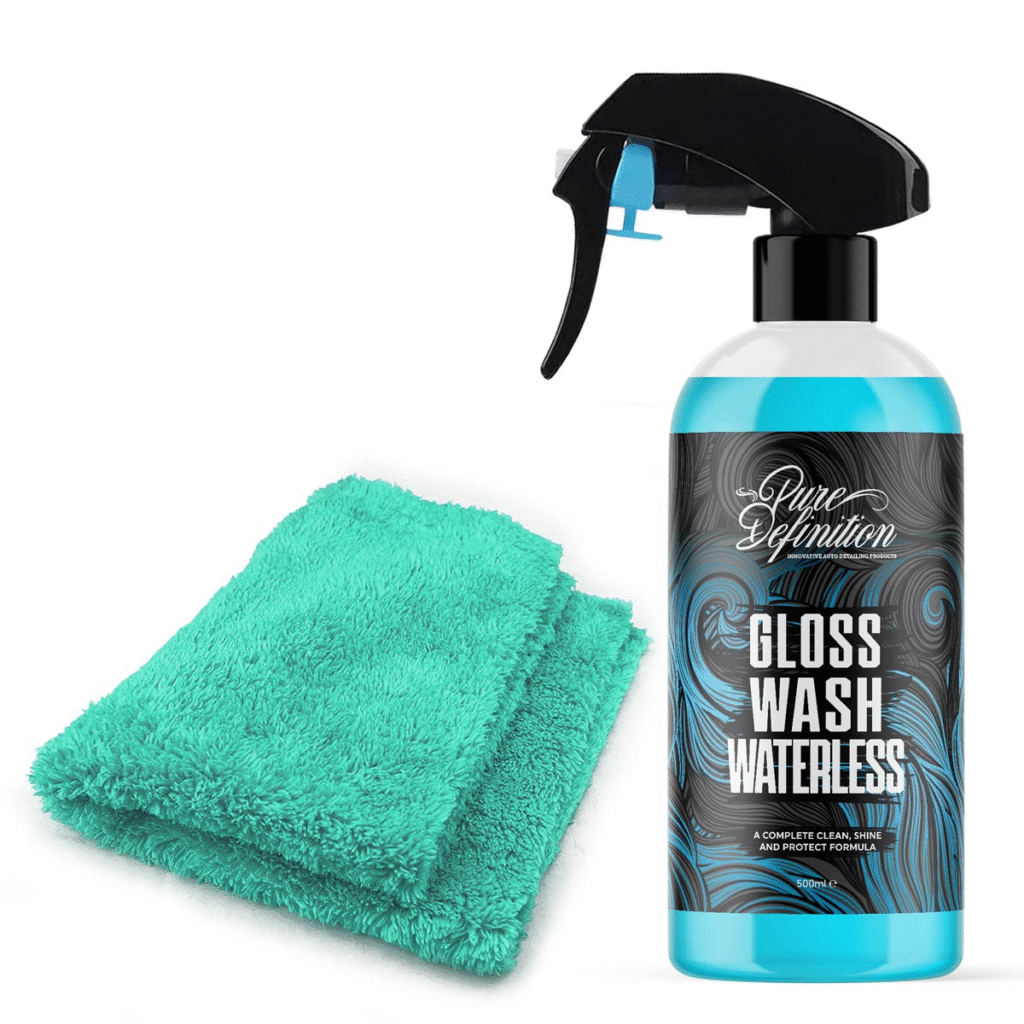Solar Panel Cleaning with and without water | complete Guide

Solar panels are a smart investment for reducing energy costs and supporting sustainability. However, dust, dirt, and debris can block sunlight, lowering their efficiency by up to 25%. Regular cleaning ensures your panels work at their best, much like maintaining a fast website ensures optimal user experience.
In this guide, we’ll show you how to clean solar panels safely and efficiently, so you can maximize energy output and extend their lifespan.
Why Clean Solar Panels?

cleaning solar panels
Cleaning solar panels isn’t just about aesthetics—it’s about performance. Dirty panels:
- Reduce energy output: Dust and grime block sunlight.
- Costs you money: Lower efficiency means higher electricity bills.
- Shorten lifespan: Debris can cause scratches or overheating.
For context, clean panels can boost energy production by 15-25%, making maintenance as crucial as optimizing a web page for speed.
Easy cleaning solar panel with water, 4 steps
To clean solar panels, start by turning off the system for safety. Then, remove any loose debris with a brush or leaf blower.
Next, wash the panels with a soft cloth or sponge and a solution of water and mild soap or a specialized solar panel cleaner.
Finally, rinse thoroughly with a hose using a gentle spray and allow them to dry.
Tools You’ll Need to Clean Solar Panels

tools to clean solar panels
| Tool | Purpose |
|---|---|
| Soft brush or sponge | Gently scrub without scratching panels. |
| Hose with spray nozzle | Rinse off loose dirt. Avoid high-pressure washers. |
| Squeegee | Remove water streaks for a spotless finish. |
| Mild soap solution | Mix dish soap with water for safe cleaning. Avoid harsh chemicals. |
| Extension pole | Safely reach rooftop panels without climbing. |
When to Clean Solar Panels
- Seasonally: At least twice a year (spring and fall).
- After storms: Remove debris post-wind, snow, or rain.
- In dusty areas: Clean monthly if you live near deserts or construction sites.
DIY vs Professional Cleaning: Pros and Cons
| Aspect | DIY Cleaning | Professional Cleaning |
|---|---|---|
| Cost | Low (0−0−50 for tools) | High (150−150−300 per service) |
| Safety | Risk of falls or damage if inexperienced | Experts use insured, safe methods |
| Efficiency | Time-consuming but effective | Fast, thorough, and hassle-free |
| Best For | Small, ground-level systems | Large or rooftop installations |
How Often Should You Clean Solar Panels?

cleaning solar panel
Factors That Affect Cleaning Frequency
- Location (urban areas collect more dust)
- Nearby trees (bird droppings and leaves)
- Weather conditions (rain helps wash away some dirt)
Seasonal Considerations
- Spring & Summer: More frequent cleaning due to pollen and dust.
- Fall & Winter: Check for leaves and snow accumulation.
Do solar panels need to be cleaned?
According to most solar experts, it is recommended that you give your panels a thorough cleaning at least once a year. An annual clean-up has been found to improve energy output by as much as 12% compared to panels that were only cleaned by rainfall. If you have time to bump it up to twice a year, that would be even better!
What chemical is used to clean solar panels?
Tetraclean (TSPC-OR1) Organic Heavy Duty Solar Panel Cleaning Liquid, specially formulated to remove cement dust, lime dust, coal dust, and other heavy dust particles. It also removes hard water, stains, Oil, Grease, etc
How can I clean solar panels from the ground?
To clean solar panels from the ground, you’ll need a hosepipe with a jet that can reach the panels. For a thorough clean, you’ll also need a long-handled brush to reach them. Make sure you’re standing on even ground and be careful with objects surrounding you.
If you’re struggling or straining to reach your solar panels, it may be best to ask a professional to clean them.
To clean solar panels without water, you can use compressed air, soft brushes, microfiber cloths, or specialized waterless cleaning products.
Waterless cleaning of a solar panel
Dust that accumulates on solar panels is a major problem, but washing the panels uses huge amounts of water. Engineers have now developed a waterless cleaning method to remove dust on solar installations in water-limited regions, improving overall efficiency.
To clean solar panels without water, you can use compressed air, soft brushes, microfiber cloths, or specialized waterless cleaning products.
Electrostatic repulsion is also a method used in some cleaning systems, where dust particles are charged and then repelled from the panel surface.
How does waterless cleaning work?
The new system uses electrostatic repulsion to cause dust particles to detach and virtually leap off the panel’s surface, without the need for water or brushes. To activate the system, a simple electrode passes just above the solar panel’s surface, imparting an electrical charge to the dust particles, which are then repelled by a charge applied to the panel itself. The system can be operated automatically using a simple electric motor and guide rails along the side of the panel.
Tools using waterless cleaning :

- 1. Compressed Air: Using a compressed air canister or a portable air compressor, you can blow away loose dirt and debris.
- This method is suitable for light soiling and should be done carefully to avoid panel damage.
- 2 Soft Brushes:
- Gentle brushing with a soft-bristled brush can help remove dirt and debris.
- Use brushes specifically designed for solar panel cleaning to avoid scratches.
- 3. Microfiber Cloths:
- Microfiber cloths are effective at removing light soiling and smudges without leaving residue or scratches.
- 4. Specialized Cleaning Products:
- Waterless cleaning solutions, available as sprays or wipes, can be used to remove dirt and grime without water.
- 5. Electrostatic Repulsion:
- This method involves charging dust particles and the solar panel surface with the same charge, creating a repulsive force that detaches the dust.
Some systems use a transparent conductive surface coated with a material like aluminum-doped zinc oxide along with a robotic electrode to apply the charges.
Best Time to Clean Solar Panels
Weather Conditions: Choose a cool, cloudy day to prevent water from evaporating quickly, leaving streaks.
Time of Day Matters: Early morning or late afternoon is best, as the panels won’t be too hot to touch.
Cleaning Solar Panels in Different Climates
Dusty and Dry Climates: Frequent cleaning is needed due to dust accumulation.
Humid and Rainy Areas: Rain helps clean panels naturally, but check for mould buildup.
Snowy Regions: Gently remove snow with a soft brush; avoid using hot water.
Tips for Cleaning Solar Panels
- Avoid high-pressure water: It can damage panels.
- Stay grounded: Use a stable ladder or extension pole.
- Skip harsh chemicals: They may void warranties.
Myths About Solar Panel Cleaning
- Rain is enough to clean panels. Not always; rain doesn’t remove all dirt.
- You can use any household cleaner. Harsh chemicals can damage panels.
Eco-Friendly Ways to Clean Solar Panels
- Use biodegradable soap.
- Collect and reuse rainwater for cleaning.
Dealing with Stubborn Stains and Bird Droppings
- Let the wet cloth sit on tough stains before scrubbing.
- Use vinegar and water for a natural cleaning solution.
Conclusion
Learning to clean solar panels is key to maintaining efficiency and protecting your investment. With simple tools and regular care, you can ensure your system performs like a well-optimized, fast website, delivering maximum results with minimal effort. Whether you DIY or hire professionals, clean panels mean more energy savings and a greener footprint.
FAQs
1. Can I use a pressure washer to clean solar panels?
No, high-pressure water can crack panels. Stick to a garden hose.
2. How often should I clean my solar panels?
At least twice a year, or monthly in dusty regions.
3. Does rain clean solar panels?
Light rain helps, but won’t remove sticky grime or bird droppings.
4. Will cleaning void my warranty?
Only if you use abrasive tools or chemicals, stick to mild soap and soft brushes.
5. Can I clean panels at night?
Yes, but early morning or evening is safer to avoid rapid drying and streaks.
